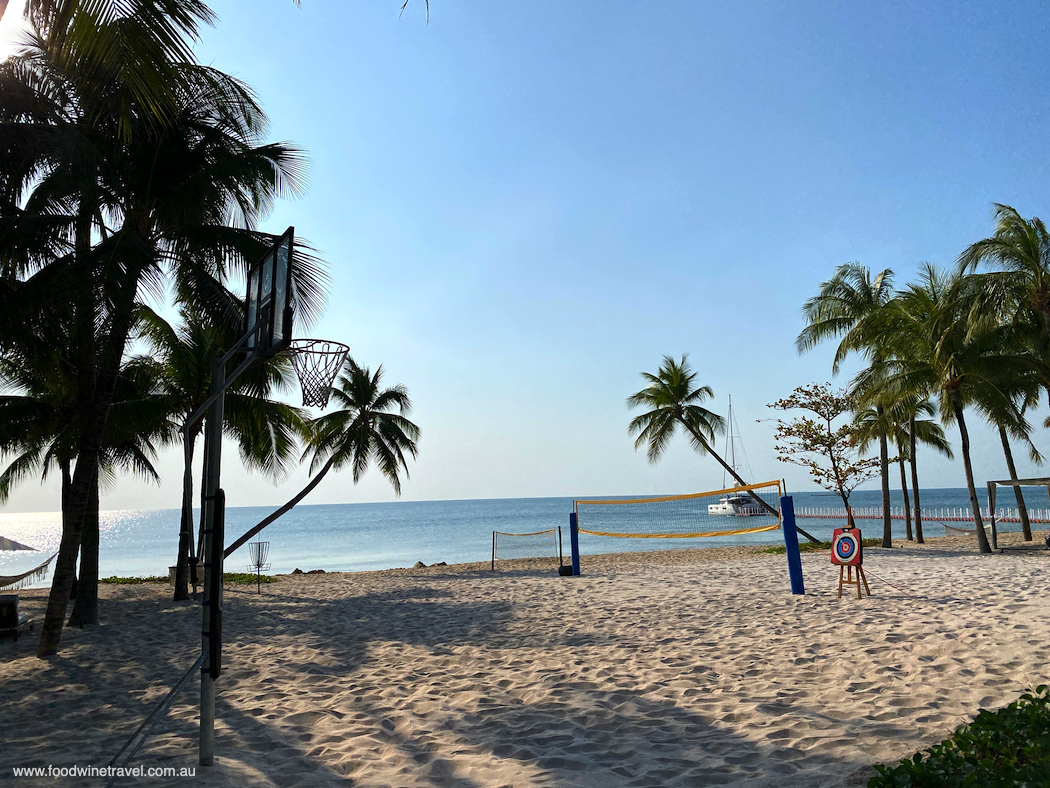
The Vietnamese island of Phu Quoc has a growing number of hotels and resorts, yet remains surprisingly undeveloped, so you might be wondering just what there is to do in Phu Quoc. The answer is that you can do as little or as much as you like. We’ve listed some activities and points of interest that we think are the top things to do in Phu Quoc. But first, let’s start with some of the essentials.
Where is Phu Quoc?
Phu Quoc is one of Southeast Asia’s best-kept secrets so it’s not surprising that many people don’t know where it is. The largest island in Vietnam, Phu Quoc is in the Gulf of Thailand, geographically south of Cambodia, close to Kampot.
Kampot is famous for its pepper, so it’s perhaps also not surprising that Phu Quoc is known (in Vietnam at least) for its pepper. Pronounced foo kwok, Phu Quoc is a one-hour flight from Ho Chi Minh City and just over two hours from Hanoi.
A growing number of new resorts cater to travellers in every price bracket, from budget accommodation to stunning 5-star properties like The Regent Phu Quoc. The island is around 50 kilometres long by 25 kilometres wide, so most major attractions are within easy reach.
When is a good time to go to Phu Quoc?
Anytime! The island has an average temperature of around 27°C, with the hottest month being April when the temperature gets up to around 29°C. The dry season is from November to March.
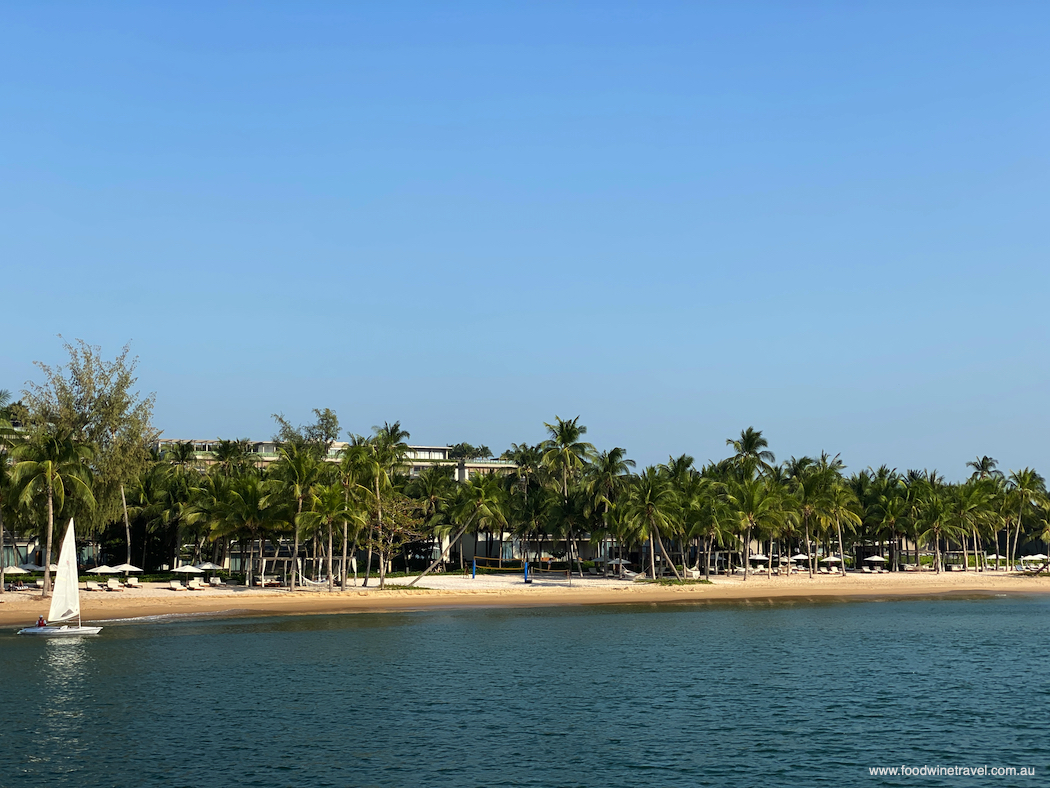
What are the top things to do in Phu Quoc?
Apart from ‘Sunset Town’ (more about this later) and a growing number of hotels and resorts, much of Phu Quoc remains rustic and undeveloped. And therein lies its charm. Traditional fishing villages are scattered around the island, and all along the coastline you’ll see brightly coloured fishing boats bobbing about in the water.
Hit the beach
Phu Quoc has some of the best beaches in Vietnam. Long Beach, a 20 kilometre stretch of coastline on the western side of the island where the Regent is located, has white sand and amazing sunsets.
More than half of Phu Quoc was designated a UNESCO Biosphere Reserve in 2006. Phu Quoc National Park in the island’s north-east is part of this Kien Giang Biosphere Reserve, a designation aimed at protecting its tropical rainforests, mountains, waterfalls, coral reefs, lakes, wetlands, coastal mudflats, and extensive seagrass ecosystems. You can go on jungle treks here with local guides, while some areas are accessible for motorbike and jeep tours.
With hundreds of species of coral, fish and marine mammals, the waters around Phu Quoc are great for snorkelling and diving. They are among the few areas in Vietnam where you can see green turtles, hawksbill turtles, dugongs, and other remarkable wildlife.
Be sure to visit Starfish Beach, where pinkish-orange starfish come out at sunset to – as the locals put it — “bathe in the light of the moon”. Otherwise known as Sao Beach, it’s in Bai Sao, a hamlet in the island’s south-east, a bit more than a half hour drive from Duong Dong, Phu Quoc’s biggest town. The best time to see the starfish is in summer, with September/October the time when they are most abundant.
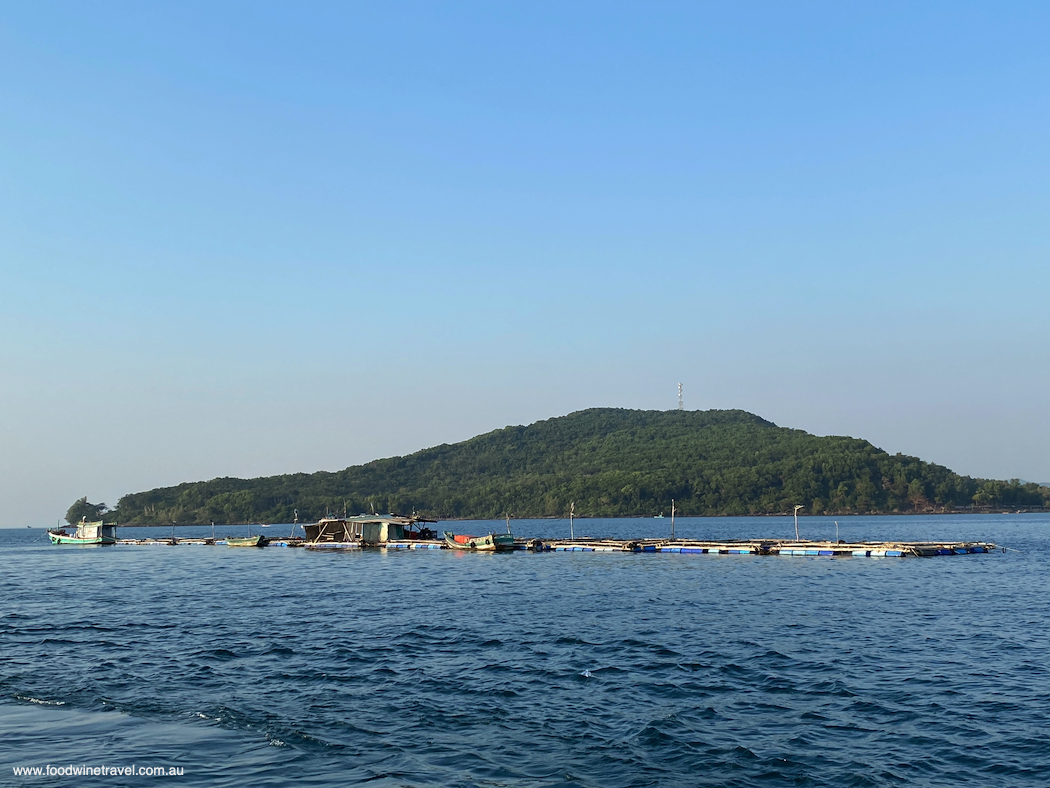
More fishy things
Even more famous than its pepper is Phu Quoc’s nuoc mam (fish sauce). Around 8 million litres of this Vietnamese staple are produced every year, mostly by family-run businesses that have been producing it for more than a hundred years. The quality of the sauce is attributed to the native anchovy (ca com) that thrives in the plankton-rich waters, along with the huge wooden vats that the salted fish is fermented in. The vats are made from the boi loi tree, found only on Phu Quoc.
In 2013, Phu Quoc fish sauce became the first Vietnamese product to be granted the European Union’s Protected Designation of Origin Status. Although tourism is growing, the island’s economy is still heavily reliant on fishing and agriculture, and it’s fascinating to visit a pepper farm or fish sauce producer.
For the latter, check out the Khai Hoan fish factory and store at 11 Hung Vurong, Duong Dong. The largest producer, Nuoc Mam Hung Thanh, is also in Duong Dong, a short walk from the market.
Squid is another delicacy on the island. You might be able to join one of the small squid boats that ply the waters at dusk, or if you want to cruise in style, go on an expedition with the Regent Phu Quoc’s beautiful yacht, Serenity. The captain uses fluorescent lights to attract the squid, and you can try out your fishing skills.
Sipping and supping
Check out the Night Market in Duong Dong for a taste of seafood and other local specialties. It takes place from 4pm to midnight in Bach Dang Street.
As per our post on The Regent Phu Quoc, we can highly recommend the Regent’s three beautiful restaurants: Rice Market, Ocean Club and Oku. If you time your visit right, you might be able to take part in one of their pop-up events involving top chefs, winemakers, mixologists and local artisans.
Next door to the Regent is the Intercontinental Phu Quoc Long Beach Resort, where you can enjoy a cocktail at INK 360, the highest sky bar in Phu Quoc, with stunning ocean views.
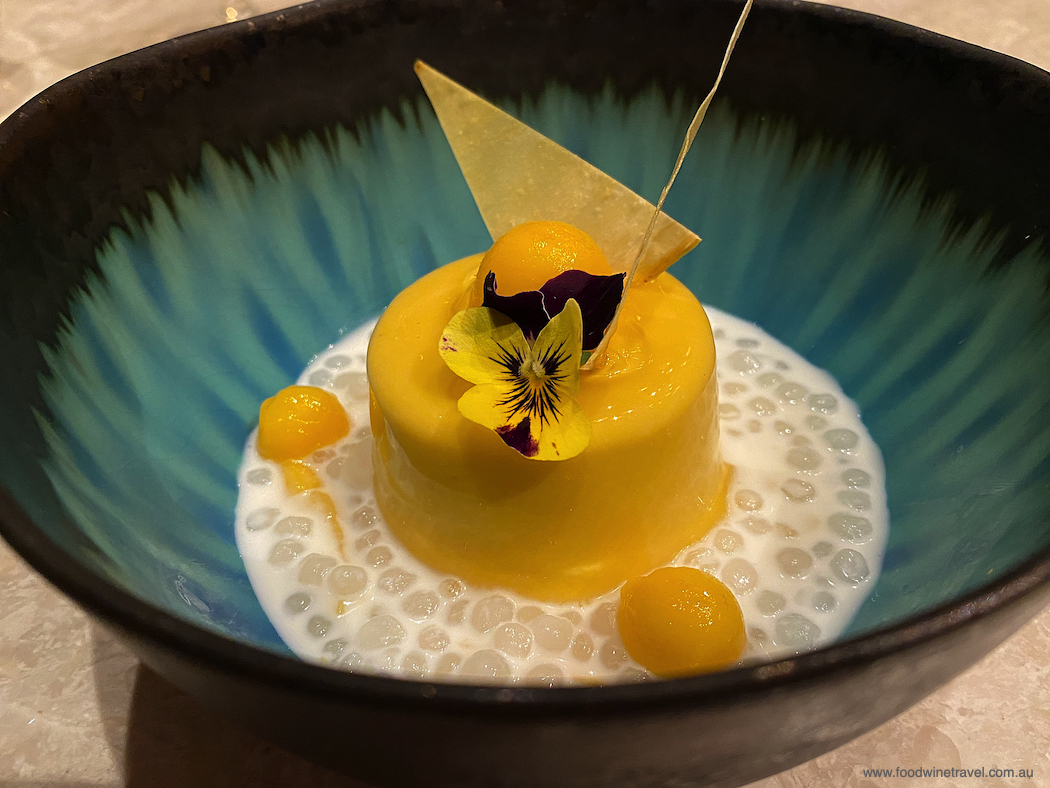
Visit a pearl farm
Phu Quoc’s white sand beaches have earned it the nickname ‘Pearl Island’. Coincidentally, its calm seas and the right amount of salinity have proved to be very favourable for pearl farming. A couple of farms are open to visitors so that you can learn about the cultivation process and buy some pearl jewellery if you wish.
One of the leading producers is Ngoc Hien Pearl Farm in the island’s south. Established in 1994, it specializes in top-tier pearl jewellery, which you can also find at hotels, resorts and the airport if you don’t get a chance to visit the farm.
Hike to a temple or pagoda
One of the most sacred temples on Phu Quoc, Sung Hung Pagoda is open every day from 7am to 7pm. Entry is free. Built in the early 20th century, it’s the oldest religious building on the island and is around 3.5km from Duong Dong town centre.
Another temple and one that has become a symbol of the island is Dinh Cau Temple, on a rocky outcrop right near Duong Dong beach. It was built in 1937 to honour Thien Hau, the Goddess of the Sea, protector of sailors and fishermen. You’ll need to climb 29 stone steps to reach the temple and brightly coloured lighthouse. Especially popular with photographers and locals taking a stroll at sunset, it offers a great view of the harbour and fishing boats.
More remote but definitely worth checking out is Ho Quoc Pagoda, around 10km north of Sao Beach. It offers some of the best views you’ll find from any temple in Vietnam, with verdant green hills and turquoise waters punctuating the picture. Sunrise and full-moon evenings are especially popular.
Time for reflection at Phu Quoc Prison
Visiting Phu Quoc Prison is a harrowing experience but one that offers an insight into the French colonial era and the Vietnam War (or the American War as it is known as locally). Built by the French to house Vietnamese dissidents, it was later used by the South Vietnamese and American forces to detain their Communist opponents.
At one time it was the largest prison camp in southern Vietnam, holding up to 40,000 people. Today it is a museum and memorial with graphic illustrations of torture, heroism and desperation. Located in the southern part of the island, it can be visited on the way to the Hon Thom cable car and Sunset Town.
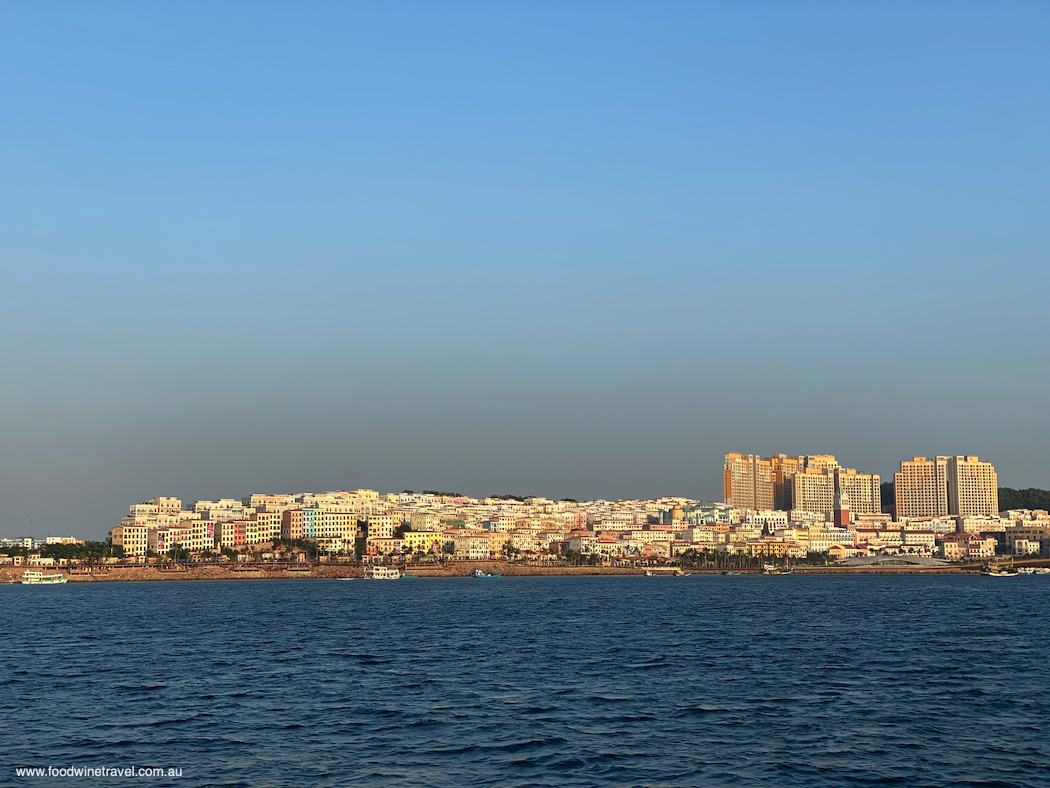
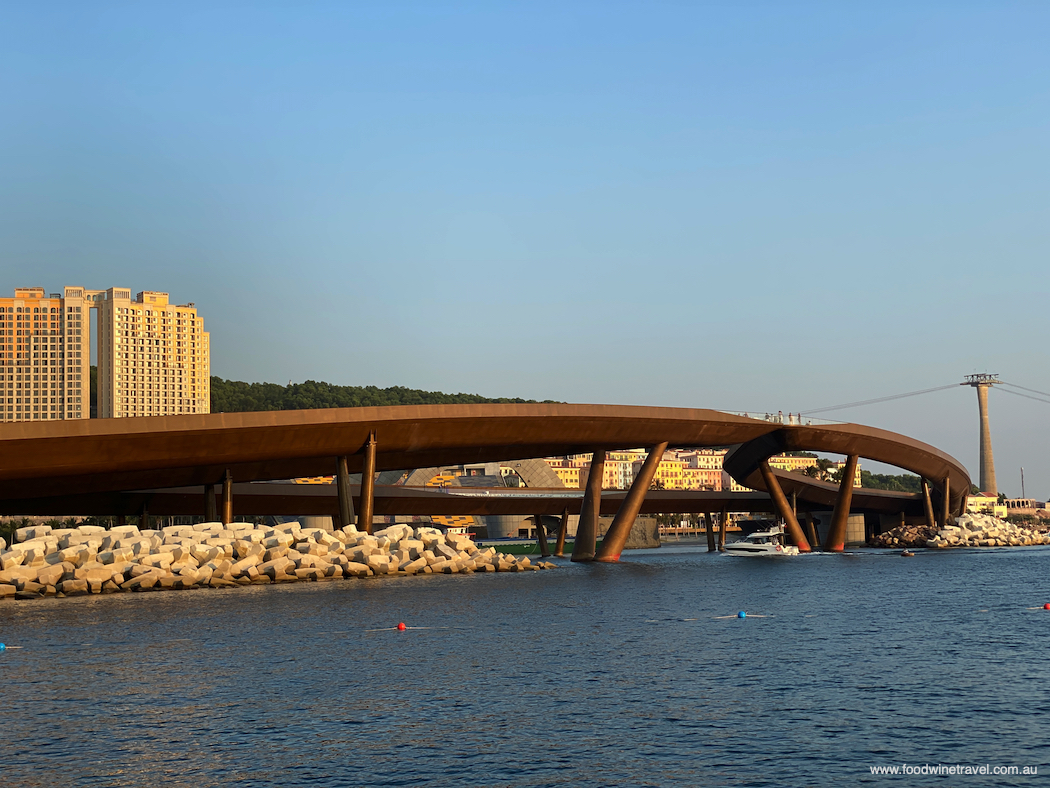
Hon Sunset Town
Looking at Sunset Town from the water, you could be forgiven for thinking you are somewhere in the Mediterranean. To us, the Roman ruins, gladiator statue, St Mark’s belltower and jumble of colourful buildings look weird and out of place. But fashion and travel influencers love it (whatever floats your boat) and the giant Vietnamese Sun Group behind the development are expecting that holidaymakers and tourism businesses will love it too.
Follow the path from Sunset Town to Kissing Point, where newly built bridges lock together as though they are kissing.
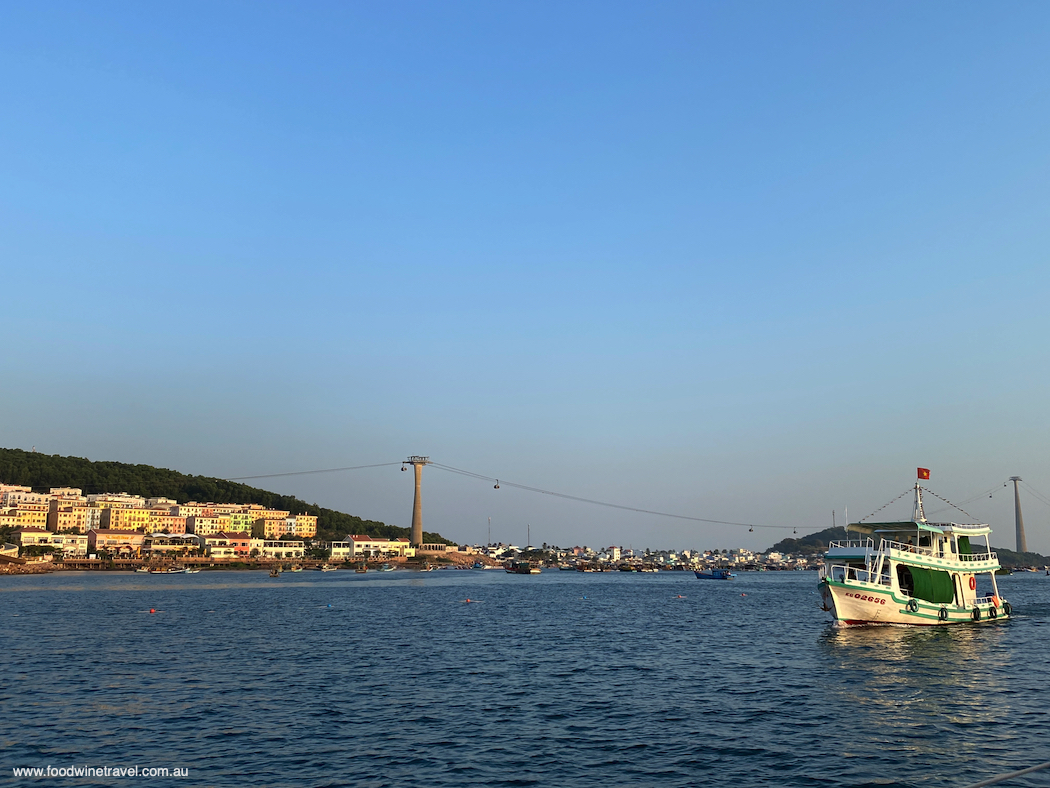
Hon Thom cable car
Hon Thom, otherwise known as Pineapple Island, is the district’s second biggest island, connected to Phu Quoc by the world’s longest oversea cable car. Covering about 8km in 8½ minutes, the cable car departs from Hon Sunset Town, gliding over beaches and fishing villages for a bird’s-eye view of the southern tip of the archipelago.
On Hon Thom, you can spend the day at Aquatopia Water Park with its themed water slides, games and activities, dining facilities, circus and magic shows, and other family-friendly fun.
Phu Quoc has so much to offer little and big kids alike. We guarantee you’ll have a memorable stay in this island destination that is yet to be overtaken by masses of tourists.
We flew to Phu Quoc at our own expense but we were hosted for two of the three nights we stayed at the Regent Phu Quoc. You can read all about our stay at this beautiful hotel in our separate post, Heaven Is A Place Called The Regent Phu Quoc.

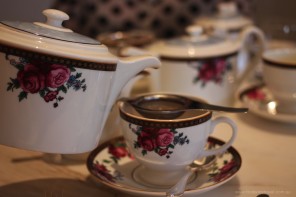
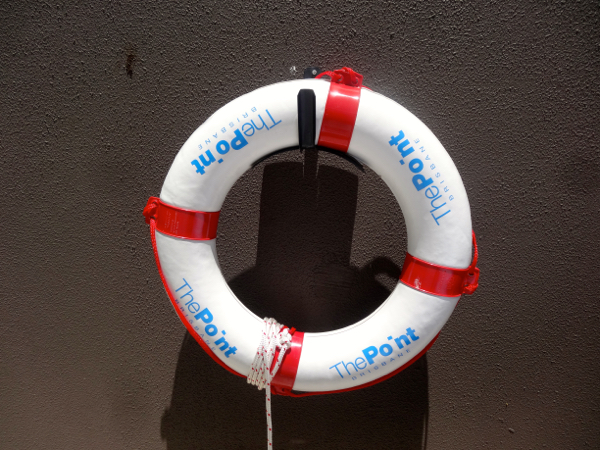
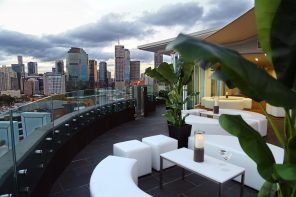
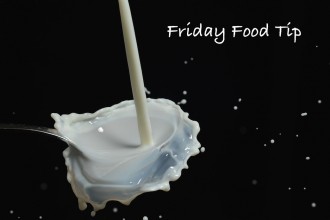
Sounds like a wonderful place to visit!